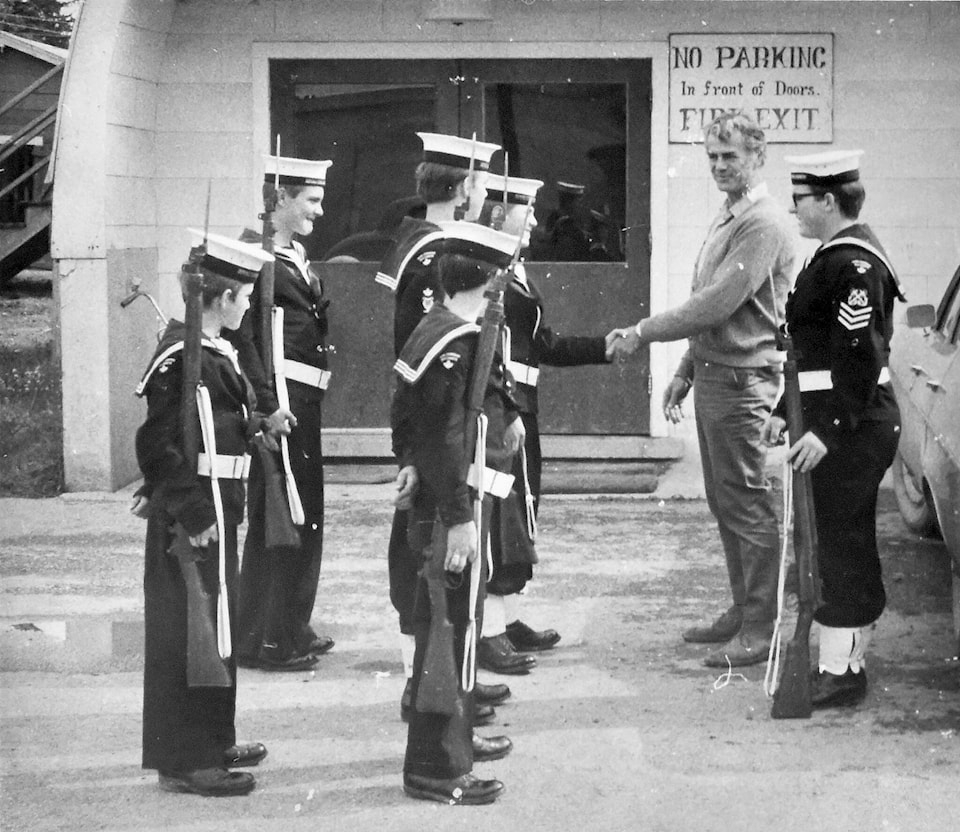Despite being several hundred kilometers from the ocean, Burns Lake was home to a thriving sea cadet corps for many years.
The sea cadet corps can trace its Canadian roots to the early years of the 20th century, when the first Boy’s Naval Brigades were formed to encourage young men to enter seafaring service. By the early 1960s, these groups had become part of the Royal Canadian Sea Cadet Corps, and membership was no longer limited strictly to young boys.
Burns Lake got its first sea cadet corps in 1964 with the establishment of Royal Canadian Sea Cadet Corps (RCSCC) Mackenzie. Membership in the organization, named in honor of HMCS Mackenzie, a Canadian destroyer escort commissioned in 1962, was open to boys aged thirteen to nineteen. Forty-five signed up to learn seafaring and life skills from six volunteer adult officers.
A branch of the Navy League was established in Burns Lake to support RCSCC Mackenzie. The organization was instrumental in obtaining two small boats for cadet use, and later created the Navy League Cadets for boys aged eleven through thirteen. Young girls finally got an opportunity to join the fun in 1972, when the Navy League Wrenettes group formed.
Local resident Pete Turner, a former member of the Royal Canadian Navy who served during the Second World War, played a key role in all three organizations. Turner, who moved to Burns Lake in the early 1950s, devoted fifteen years of his life to helping young boys and girls learn useful skills.
During winter, dry land training sessions were held indoors. In summer, the young cadets gained ‘hands on’ experience piloting the organization’s fleet, which by the late 1960s totaled five boats of varying types and sizes, including the Lady Tweedsmuir, a former tour boat once owned by the Harrisons of Ootsa Lake.
Teaching seafaring skills to children with little experience made for some humorous incidents. Turner and his adult colleagues regularly organized “Man Overboard” drills that involved using small boats to retrieve life jackets thrown into the lake. On several occasions, children in the vessels were witnessed rowing in opposite directions.
In 1975, a 21-foot sailboat named Lucky Lady was added to the fleet, and cadets spent the Labour Day weekend on Deadman’s Island, where they camped outdoors and engaged in mock naval battles. The following year, three local cadets—Bill Dell, Leo Jean, and Donald Malchow—won a month-long cruise to Hawaii courtesy of the Royal Canadian Navy.
Given the opportunities available to cadets, it’s not surprising that RCSCC Mackenzie flourished. At the height of its popularity, the organization boasted more than 70 members. Volunteers built a large facility on the south side of Burns Lake located on what was known as Big Bay. Camp Mackenzie, as it was called, featured a cook shack, small barracks, dock, and a tenting area. The facility received official approval in 1977 from Lt. Bruce Robinson, area cadet officer for Pacific Region, and remained in use for many years. At one time, the organization planned to expand the camp by adding a larger wharf and repurposing the old tour boat as a guard shack.
Yet as time went on, dedicated men and women like Turner, Doug Ruffell, and the Stephensons (Bea and Charlie) retired or shifted their focus to other projects. Interest in cadets dwindled; by 1983, RCSCC Mackenzie had disbanded, and an ad appeared in the Lakes District News requesting information on the “location of the cadet uniforms.”
The organization was resurrected in the early 1990s as the 320 Trinity Royal Canadian Sea Cadet Corps, but never enjoyed the success of its predecessor. Today, the remains of Camp Mackenzie, and the old tour boat, can still be found at the east end of Burns Lake.
© 2020 Lakes District Museum Society
